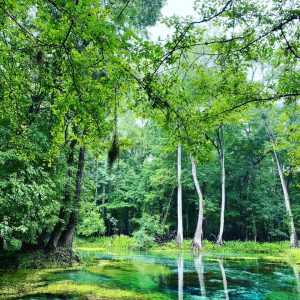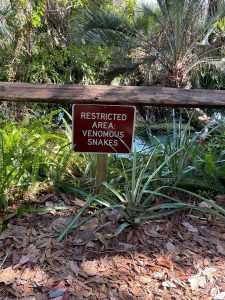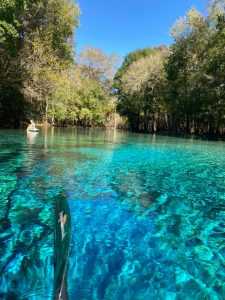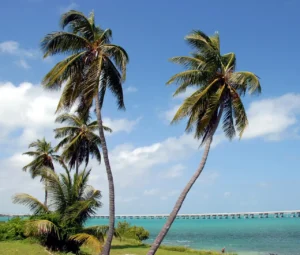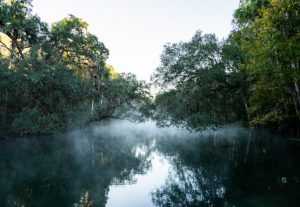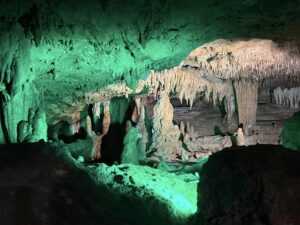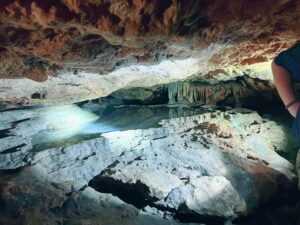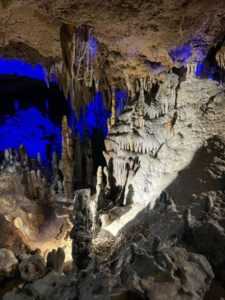Remember all those wonderful childhood memories, such as going swimming with your father in the woods or simply sitting under a cherry tree? Want to give your children the same outdoor experiences you had as a child? Then Florida’s springs are an excellent option. They’re ideal for hiking, swimming, and simply relaxing. Visiting Gilchrist Blue Springs State Park with children, in particular, with its cool springs, provides an unforgettable adventure for families.
With clear blue skies and warm, pleasant temperatures, Florida’s weather is ideal for family vacations, especially when swimming is involved! The state is well-known for its extraordinary natural springs, and the Gilchrist Blue Spring is without a doubt one of the most popular family destinations. During the hot summers, you can cool off and teach the kids to swim, snorkel, and paddle in a natural pool that isn’t as crowded as the other springs nearby. Continue reading to find out what else this incredible and natural oasis has in store for your family!
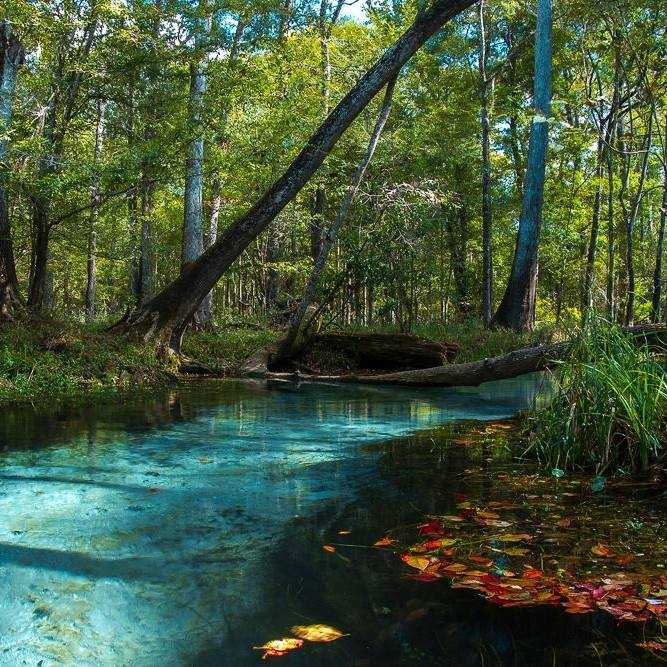
Gilchrist Blue Springs State Park is located where?
Gilchrist Blue Springs State Park is located in Gilchrist County, about 5 miles west of High Springs and 20 miles north of Gainesville. It will take about an hour to get to the property from the Florida-Georgia border along I75. Gainesville, about 45 minutes away, is the closest town to the springs. Ginnie Springs and Poe Springs are two nearby springs.
The first mile into the park is on a dirt road, but vehicles can pass through fairly easily. When it rains heavily, the driveway becomes a little more difficult to navigate. RVs and trailers up to 40 feet in length can easily fit in the driveways.
What exactly is Gilchrist Blue Springs?
Springs in Florida are natural water sources formed when groundwater bubbles up from the Floridian Aquifer through layers of limestone and is discharged on top as surface water. Surprisingly, springs provide 90 percent of the state’s drinking water. It’s also fascinating to learn that these springs are responsible for the majority of marine ecosystems.
Gilchrist Blue Springs is one of Gilchrist Blue Springs State Park’s newest and largest springs. It is also the only one where swimming is permitted. This second-magnitude spring spews over 44 million gallons of water per day and, like many other springs in the area, eventually flows into the Santa Fe River.
The springs are a popular tourist destination for a variety of reasons. Because the water is shallow, children and adults of all ages can enjoy it. The state park also has a campground, making it ideal for both short day trips and longer stays.
What are the timings for Gilchrist Blue Springs State Park?
Gilchrist Blue Springs Park is open from 8 a.m. to sunset every day of the week, all year. If you are camping, you may swim in the spring whenever you want, from early morning to late at night until 9 p.m. If you and your family intend to arrive after sunset to set up camp, make sure to notify the authorities ahead of time. It is also worth noting that campers must have their tents set up by 11 p.m.
Gilchrist Blue Springs State Park: How Busy Is It?
Gilchrist Blue Springs, like most springs in the state, attracts visitors all year, but it is especially popular during the hot summer months. During the summer, it may be difficult to find a parking spot, so it’s best to arrive early (around 10 a.m.) or make a reservation ahead of time.
The best time to visit in the spring is during the off-season (winter and spring), when the park is less crowded. Weekdays are always preferable to weekends for short trips if you want to avoid crowds. Just be careful not to stay overnight during the rainy season, as rain can drain right through your campsite, making it unpleasant and muddy.
How Much Does a Trip to Gilchrist Blue Springs State Park Cost?
The park’s entrance fee is $6 for two to eight people in a vehicle. The entry fee for a single occupant in a vehicle is $4, while children under the age of six are free. A single-use day pass can be purchased online. While these general entry rules apply as a rule, if the park reaches capacity, only registered campers are permitted entry. Camping costs $18 per night, plus a reservation and utility fee. Keep in mind that onsite payments are only accepted in cash.
Kayaks, canoes, and paddleboards are available for rent on-site, with prices ranging from $45 for an all-day canoe rental to $7 for an all-day inner tube rental. The snorkeling equipment is $20. Keep in mind that, while renting may be a good option for those who have forgotten their own equipment, it may be a little pricey when traveling with the entire family. That’s why, if you’re looking to save money, bringing your own items should be your first choice. One of the best parts about the Gilchrist Blue Spring is that you can bring your own tubes, inflatable boats, and kayaks; basically, anything to push off in the water.
What is the temperature of the water at Gilchrist Blue Springs?
The Gilchrist Blue Spring is 24 feet deep and has water temperature of 72 degrees all year. The crystal clear water body, surrounded by lustrous flora and fauna, is ideal for a refreshing swim. Although some may find it slightly chilly at first, most people begin to enjoy it within a few minutes of diving in. The swimming area is relatively shallow, so even the shortest members of your posse can stand comfortably in it. This surface area before the deep blue vent is what allows the spring to be open to swimmers all year. The spring is surrounded by a jumping platform and a white-sand beach, providing your little swimmers with two ways to enter the water.
Gilchrist Blue Springs State Park also has several other family-friendly springs that are worth exploring. Little Blue Spring is a small swimming hole hidden beneath a cypress canopy, and Naked Spring is a scenic swimming hole reached via the nature walk or by following Naked Run from the main Blue Spring Run. The proximity to the campsites is the most exciting aspect of this spring. If your family is only staying for a few days, you will be able to jump into this natural swimming hole first thing in the morning before the day-trippers arrive!
Is it possible to tube at Gilchrist Blue Springs?
Tubing is a fun family activity, and Gilchrist Blue Spring is a great place for first-time tubers to get comfortable in and around the water. Begin by introducing your children to splashing safely in the shallows before they hop into their own tubes. Children over the age of five, as a general rule, can begin their tubing adventure safely under supervision. However, the waters are gentle enough that babies and toddlers can easily accompany their parents in their tubes.
Only until the main Gilchrist Blue Springs zone is the spring accessible for swimming and tubing. A rope marks the area, beyond which is a 1/4-mile spring run that leads to the Santa Fe River. Due to safety concerns, tubing is prohibited in this area.
Are Alligators Found at Gilchrist Blue Springs?
You’ll notice signs warning visitors to beware of alligators as you explore the springs, but don’t be alarmed. Alligators are mostly found in the spring run beyond the swimming area, where both tubing and swimming are prohibited. You should be more cautious when approaching the vent or the river with small children. Alligators are known to be wary of humans in general, so as long as you swim in areas where other people are present, you should be fine.
Gilchrist Blue Springs State Park Camping
Gilchrist Blue Springs State Park has 25 campsites, including 17 RV and 8 tent-only areas with 30-amp power and water hookups. Both the pull-through and back-in camping areas have a picnic table and a fire pit. Onsite reservations are accepted here, so you can get a site on a first-come, first-served basis without making a prior reservation. However, because the driveways are small, it is best to reserve a spot ahead of time (they can be booked up to 11 months ahead of time).
In terms of reservations, sites 17 and 18 are said to be two of the most spacious to consider when making yours online. They’re slightly secluded, close to the bathhouse, and only a short walk to the head spring, with the trail beginning right next to it. Although there is a restroom with hot showers, it is important to note that the park does not have a dumping station. Keep in mind that the restrooms are cleaned every day at 8 a.m., so get the kids ready for the day before the park reaches capacity.
One of the best aspects of the Gilchrist State Park camping campground is its proximity to the on-site springs, which allows you to swim for as long as you want! There is complete silence between 11:00 p.m. and 7:00 a.m. due today’s visitors not being permitted on the campgrounds during this time, making it ideal for some private swim time. A floodlight on a beam outside the spring shines light onto the water until 9 p.m. every night, making it safe and comfortable for families. Nothing beats the sensation of having the entire spring to yourself!
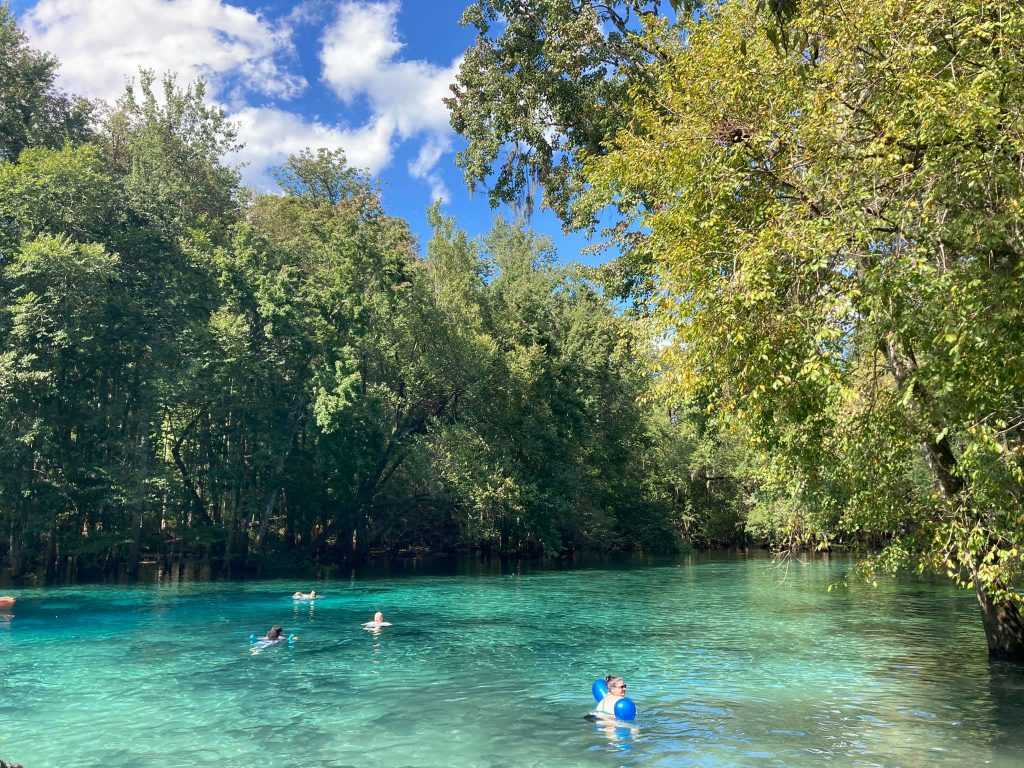
Things To Do At Gilchrist Blue Springs State Park
Snorkeling:
Nothing beats snorkeling in Gilchrist Blue Springs State Park‘s crystal-clear water with your daring kids. Underwater, your family will be enthralled and energized by the sight of a variety of friendly fish, plants, and even the occasional manatee. You can either purchase a snorkeling kit on-site or bring your own.
Watercraft:
Stand-up paddleboarding, kayaking, and canoeing are all excellent activities for keeping older children and teens engaged! They’ll be able to see right down to the bottom of the stream because the water is so blue and clear. It’ll be an unforgettable experience.
If you want to kayak down the Santa Fe River, you must plan ahead of time. Santa Fe Canoe Outpost, near US 441, is a good place to go canoeing. It’s about a 10-minute drive from High Springs, but it’s also a great place to explore nature. Adventure Outpost also provides guided kayak and canoe tours, which are enjoyable for all ages.
Geocaching:
Geocaching is a great way for kids to get outside and explore nature. Download the Geocaching app, and it will direct you to the nearest locations where you can begin your adventure. You can find the geocache by following the steps in the app. You and your child will enjoy scavenger hunt-style outdoor exploration at Gilchrist Blue Springs State Park!
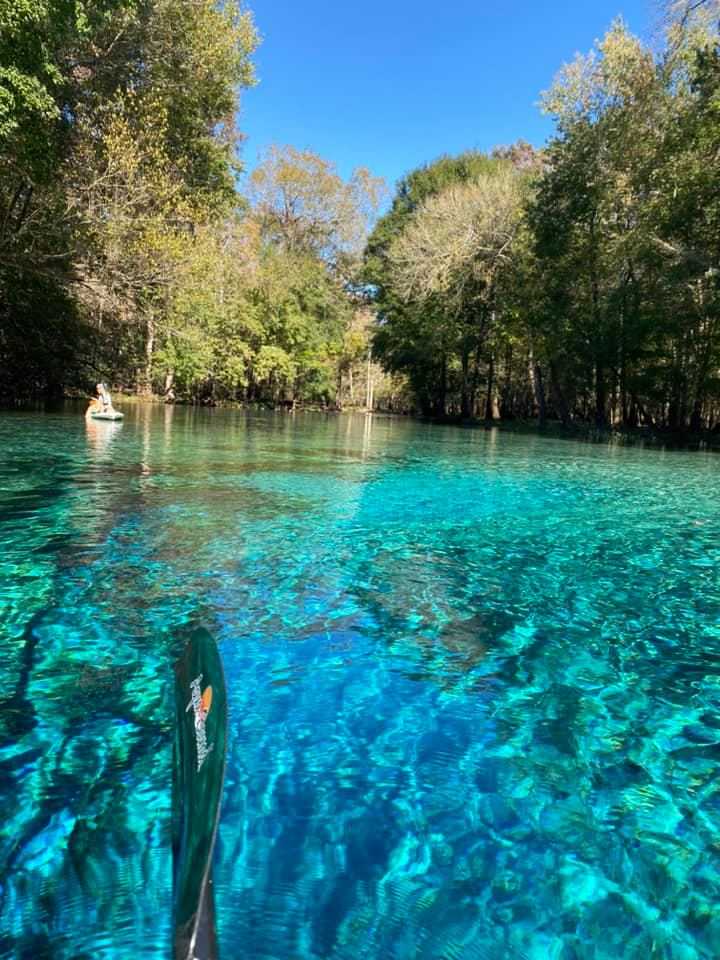
Hiking:
The Gilchrist Blue Springs Loop has a 1.7-mile trail that is enjoyable for both children and adults and leads you through the natural springs and the stream nearby. It even has a lake along its route! You can begin at the parking lot and work your way back. It makes a loop (marked in blue, a smaller one in yellow) through the park as you walk from the parking area to the entrance.
Tips for Gilchrist Blue Springs State Park
- If your family plans to camp there during the summer, bring a cooler, some tents, sleeping bags, food, a few flashlights, a camp stove, and other necessary camping and cooking supplies.
- Bug spray is an absolute must. Gnats are particularly bothersome in this area, so it’s critical to protect yourself in order to have a good time. Consider using a citronella-scented candle for the same purpose.
- The property does not sell it, so if your family plans to camp there during the colder months, bring plenty of your own firewood with you.
- Consider bringing a first-aid kit with bandages, medicine, and a Swiss knife. In case of an emergency, obtain contact information for staff and rangers from the Rangers Office.
- Apply plenty of sunscreen throughout the day, and use a water-resistant sunscreen if you’re going swimming.
- Bring Ziplock bags to protect your essentials. Fill one with a map or compass and a GPS system that works. Use another to transport snacks and a separate plastic cover to store wet clothes. Remember to bring a water bottle – or several if possible!


